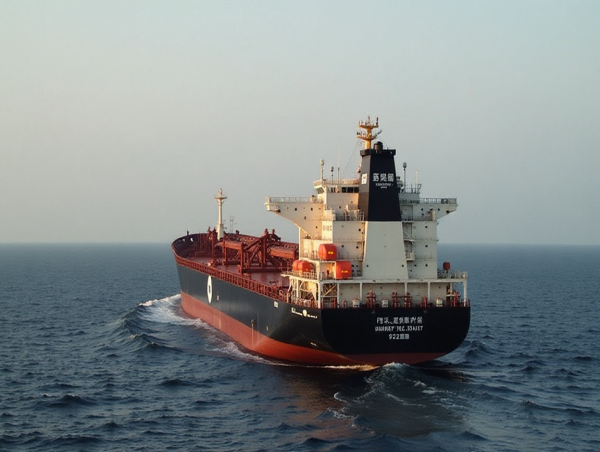China’s seaborne crude oil imports reached an estimated 10.9 million barrels per day in April, marking the highest monthly volume since August 2023, Vortexa said.
“This surge was initiated by concerns over potential supply disruptions amid tightening US sanctions, prompting Chinese refiners to ramp up bookings and bolster onshore inventories,” Emma Li, senior market analyst at Vortexa, said.
But steadily falling prices over recent months are likely to support and prolong this pattern.
Significant crude oil buildup
China experienced a significant acceleration in the buildup of crude oil inventories in its onshore tanks throughout April.
Over the five weeks leading up to May 4, the average build of crude oil in China was above 1.1 million barrels per day (mbd), showing a significant increase compared to the rate in March, according to Vortexa.

March’s oil inventory increase was primarily in Shandong and fueled by Iranian crude.
However, the most recent surge, with about 80% occurring outside Shandong, was driven by state-owned traders leveraging international price fluctuations, Li said.
China’s major oil companies had a crude tank utilisation rate of 62% as of May 4, indicating significant available capacity for additional stockpiling.
Refinery maintenance and strategic restocking are currently underway, leading to anticipated inventory growth through the third quarter of this year, the energy analytics firm said.
Following Saudi Arabia’s recent OPEC+ decision to boost June output after significant May official selling price (OSP) reductions for Asian customers, coupled with growing oversupply in the Atlantic Basin, China may be further encouraged to buy mainstream crude oil, according to Li.
Tankers to China
Despite thin profit margins for independent Chinese refineries since late 2023, their demand for lower-priced raw materials continues to be strong.
“These “teapot” refiners, concentrated along China’s coastline, are increasingly turning to sanctioned sources for cost-effective crude,” Li added.
Iranian crude and condensate imports decreased slightly in April to just under 1.5 mbd, following a record 1.8 mbd in March, Vortexa data showed.
Despite this decrease, April’s figure remains higher than the 2024 average of 1.4 mbd.

Since January 10, Russian Arctic oil has been a strong competitor, loaded onto US-sanctioned tankers but subsequently rejected by traditional buyers.
Due to a lack of access to regular markets, Arctic cargoes have been redirected to China, according to Vortexa.
This rerouting involves ship-to-ship (STS) transfers to non-sanctioned tankers in the South China Sea.
Consequently, Russian Arctic crude oil imports into China reached a record 280,000 barrels per day (kbd) in April, compensating for a decrease in Iranian oil volumes, data from Vortexa showed.
Chinese demand for Russia’s Far East light crude oil grades, such as Sokol and Sakhalin Blend, stayed robust, surpassing 220 thousand barrels per day (kbd) in April.
Smaller refineries continue to favor these grades because of their advantageous distillate yield and geographical closeness.
Russian ESPO Blend and Urals
Imports of Russia’s main crude oil grades, ESPO Blend and Urals, fell to their lowest levels in several years during the last month, according to Vortexa.
This decline was primarily due to pricing challenges caused by high shipping expenses for direct deliveries on non-sanctioned vessels.
As a result, these Russian crudes became less attractive compared to other discounted options, the energy firm said.
China’s combined imports of discounted crude oil from Iran, Venezuela, and Russia’s northern ports reached a record of approximately 2.4 mbd in March and April, despite logistical challenges.
“This underscores China’s expanding willingness on sanctioned crude and the so-called “dark fleet” as a means to secure affordable supply amid global uncertainty,” Vortexa’s Li added.
Looking ahead, sanctioned crude volumes may ease in May due to the delayed onset of spring maintenance among teapot refiners.
Despite restrictions, strong underlying demand for discounted feedstock persists. US sanctions are likely to increase Chinese consolidation of these volumes, strengthening its role as the primary outlet for politically sensitive crude.
“Absent a major policy shift or global demand disruption, this trend of stockpiling and reliance on sanctioned suppliers is expected to persist through the coming months,” Li noted.
The post China accelerates crude oil stockpiling amid sanction fears appeared first on Invezz






